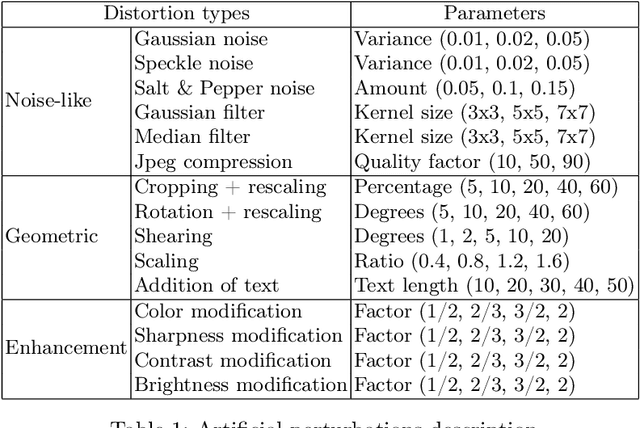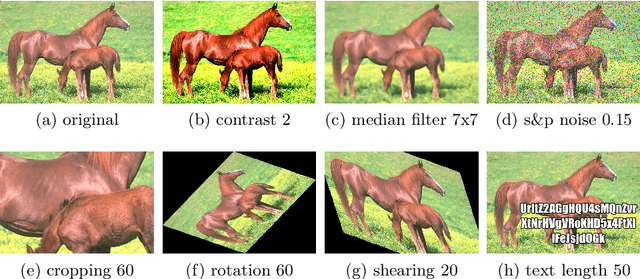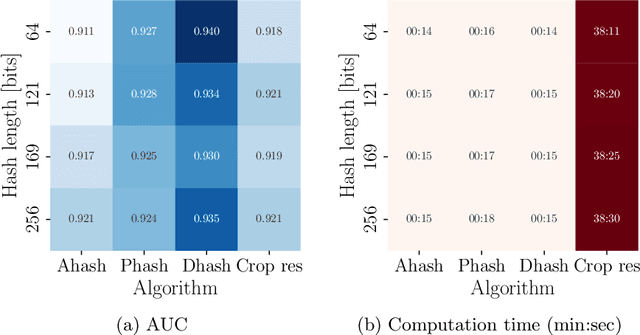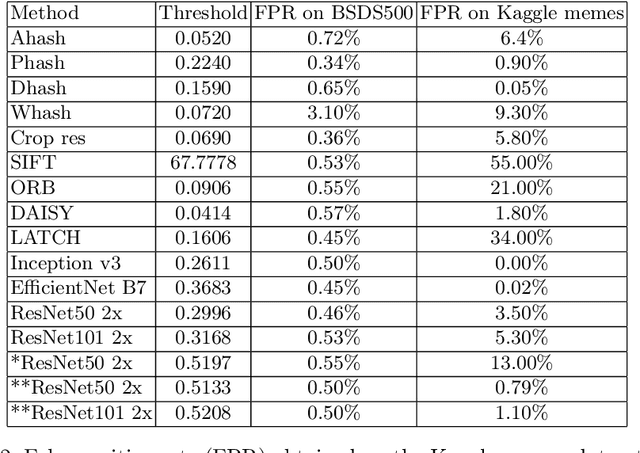Andrei Kucharavy
Ecole Polytechnique Federale de Lausanne, Lausanne, Switzerland
Getting Your Indices in a Row: Full-Text Search for LLM Training Data for Real World
Oct 10, 2025Abstract:The performance of Large Language Models (LLMs) is determined by their training data. Despite the proliferation of open-weight LLMs, access to LLM training data has remained limited. Even for fully open LLMs, the scale of the data makes it all but inscrutable to the general scientific community, despite potentially containing critical data scraped from the internet. In this paper, we present the full-text indexing pipeline for the Apertus LLM training data. Leveraging Elasticsearch parallel indices and the Alps infrastructure, a state-of-the-art, highly energy-efficient arm64 supercluster, we were able to index 8.6T tokens out of 15.2T used to train the Apertus LLM family, creating both a critical LLM safety tool and effectively an offline, curated, open web search engine. Our contribution is threefold. First, we demonstrate that Elasticsearch can be successfully ported onto next-generation arm64-based infrastructure. Second, we demonstrate that full-text indexing at the scale of modern LLM training datasets and the entire open web is feasible and accessible. Finally, we demonstrate that such indices can be used to ensure previously inaccessible jailbreak-agnostic LLM safety. We hope that our findings will be useful to other teams attempting large-scale data indexing and facilitate the general transition towards greener computation.
Apertus: Democratizing Open and Compliant LLMs for Global Language Environments
Sep 17, 2025Abstract:We present Apertus, a fully open suite of large language models (LLMs) designed to address two systemic shortcomings in today's open model ecosystem: data compliance and multilingual representation. Unlike many prior models that release weights without reproducible data pipelines or regard for content-owner rights, Apertus models are pretrained exclusively on openly available data, retroactively respecting robots.txt exclusions and filtering for non-permissive, toxic, and personally identifiable content. To mitigate risks of memorization, we adopt the Goldfish objective during pretraining, strongly suppressing verbatim recall of data while retaining downstream task performance. The Apertus models also expand multilingual coverage, training on 15T tokens from over 1800 languages, with ~40% of pretraining data allocated to non-English content. Released at 8B and 70B scales, Apertus approaches state-of-the-art results among fully open models on multilingual benchmarks, rivalling or surpassing open-weight counterparts. Beyond model weights, we release all scientific artifacts from our development cycle with a permissive license, including data preparation scripts, checkpoints, evaluation suites, and training code, enabling transparent audit and extension.
Going over Fine Web with a Fine-Tooth Comb: Technical Report of Indexing Fine Web for Problematic Content Search and Retrieval
Aug 29, 2025Abstract:Large language models (LLMs) rely heavily on web-scale datasets like Common Crawl, which provides over 80\% of training data for some modern models. However, the indiscriminate nature of web crawling raises challenges in data quality, safety, and ethics. Despite the critical importance of training data quality, prior research on harmful content has been limited to small samples due to computational constraints. This project presents a framework for indexing and analyzing LLM training datasets using an ElasticSearch-based pipeline. We apply it to SwissAI's FineWeb-2 corpus (1.5TB, four languages), achieving fast query performance--most searches in milliseconds, all under 2 seconds. Our work demonstrates real-time dataset analysis, offering practical tools for safer, more accountable AI systems.
Low-Perplexity LLM-Generated Sequences and Where To Find Them
Jul 02, 2025Abstract:As Large Language Models (LLMs) become increasingly widespread, understanding how specific training data shapes their outputs is crucial for transparency, accountability, privacy, and fairness. To explore how LLMs leverage and replicate their training data, we introduce a systematic approach centered on analyzing low-perplexity sequences - high-probability text spans generated by the model. Our pipeline reliably extracts such long sequences across diverse topics while avoiding degeneration, then traces them back to their sources in the training data. Surprisingly, we find that a substantial portion of these low-perplexity spans cannot be mapped to the corpus. For those that do match, we quantify the distribution of occurrences across source documents, highlighting the scope and nature of verbatim recall and paving a way toward better understanding of how LLMs training data impacts their behavior.
LLM Detectors Still Fall Short of Real World: Case of LLM-Generated Short News-Like Posts
Sep 05, 2024



Abstract:With the emergence of widely available powerful LLMs, disinformation generated by large Language Models (LLMs) has become a major concern. Historically, LLM detectors have been touted as a solution, but their effectiveness in the real world is still to be proven. In this paper, we focus on an important setting in information operations -- short news-like posts generated by moderately sophisticated attackers. We demonstrate that existing LLM detectors, whether zero-shot or purpose-trained, are not ready for real-world use in that setting. All tested zero-shot detectors perform inconsistently with prior benchmarks and are highly vulnerable to sampling temperature increase, a trivial attack absent from recent benchmarks. A purpose-trained detector generalizing across LLMs and unseen attacks can be developed, but it fails to generalize to new human-written texts. We argue that the former indicates domain-specific benchmarking is needed, while the latter suggests a trade-off between the adversarial evasion resilience and overfitting to the reference human text, with both needing evaluation in benchmarks and currently absent. We believe this suggests a re-consideration of current LLM detector benchmarking approaches and provides a dynamically extensible benchmark to allow it (https://github.com/Reliable-Information-Lab-HEVS/dynamic_llm_detector_benchmark).
LLMs Perform Poorly at Concept Extraction in Cyber-security Research Literature
Dec 12, 2023



Abstract:The cybersecurity landscape evolves rapidly and poses threats to organizations. To enhance resilience, one needs to track the latest developments and trends in the domain. It has been demonstrated that standard bibliometrics approaches show their limits in such a fast-evolving domain. For this purpose, we use large language models (LLMs) to extract relevant knowledge entities from cybersecurity-related texts. We use a subset of arXiv preprints on cybersecurity as our data and compare different LLMs in terms of entity recognition (ER) and relevance. The results suggest that LLMs do not produce good knowledge entities that reflect the cybersecurity context, but our results show some potential for noun extractors. For this reason, we developed a noun extractor boosted with some statistical analysis to extract specific and relevant compound nouns from the domain. Later, we tested our model to identify trends in the LLM domain. We observe some limitations, but it offers promising results to monitor the evolution of emergent trends.
Byzantine-Resilient Learning Beyond Gradients: Distributing Evolutionary Search
Apr 20, 2023Abstract:Modern machine learning (ML) models are capable of impressive performances. However, their prowess is not due only to the improvements in their architecture and training algorithms but also to a drastic increase in computational power used to train them. Such a drastic increase led to a growing interest in distributed ML, which in turn made worker failures and adversarial attacks an increasingly pressing concern. While distributed byzantine resilient algorithms have been proposed in a differentiable setting, none exist in a gradient-free setting. The goal of this work is to address this shortcoming. For that, we introduce a more general definition of byzantine-resilience in ML - the \textit{model-consensus}, that extends the definition of the classical distributed consensus. We then leverage this definition to show that a general class of gradient-free ML algorithms - ($1,\lambda$)-Evolutionary Search - can be combined with classical distributed consensus algorithms to generate gradient-free byzantine-resilient distributed learning algorithms. We provide proofs and pseudo-code for two specific cases - the Total Order Broadcast and proof-of-work leader election.
Stochastic Parrots Looking for Stochastic Parrots: LLMs are Easy to Fine-Tune and Hard to Detect with other LLMs
Apr 18, 2023Abstract:The self-attention revolution allowed generative language models to scale and achieve increasingly impressive abilities. Such models - commonly referred to as Large Language Models (LLMs) - have recently gained prominence with the general public, thanks to conversational fine-tuning, putting their behavior in line with public expectations regarding AI. This prominence amplified prior concerns regarding the misuse of LLMs and led to the emergence of numerous tools to detect LLMs in the wild. Unfortunately, most such tools are critically flawed. While major publications in the LLM detectability field suggested that LLMs were easy to detect with fine-tuned autoencoders, the limitations of their results are easy to overlook. Specifically, they assumed publicly available generative models without fine-tunes or non-trivial prompts. While the importance of these assumptions has been demonstrated, until now, it remained unclear how well such detection could be countered. Here, we show that an attacker with access to such detectors' reference human texts and output not only evades detection but can fully frustrate the detector training - with a reasonable budget and all its outputs labeled as such. Achieving it required combining common "reinforcement from critic" loss function modification and AdamW optimizer, which led to surprisingly good fine-tuning generalization. Finally, we warn against the temptation to transpose the conclusions obtained in RNN-driven text GANs to LLMs due to their better representative ability. These results have critical implications for the detection and prevention of malicious use of generative language models, and we hope they will aid the designers of generative models and detectors.
Fundamentals of Generative Large Language Models and Perspectives in Cyber-Defense
Mar 21, 2023Abstract:Generative Language Models gained significant attention in late 2022 / early 2023, notably with the introduction of models refined to act consistently with users' expectations of interactions with AI (conversational models). Arguably the focal point of public attention has been such a refinement of the GPT3 model -- the ChatGPT and its subsequent integration with auxiliary capabilities, including search as part of Microsoft Bing. Despite extensive prior research invested in their development, their performance and applicability to a range of daily tasks remained unclear and niche. However, their wider utilization without a requirement for technical expertise, made in large part possible through conversational fine-tuning, revealed the extent of their true capabilities in a real-world environment. This has garnered both public excitement for their potential applications and concerns about their capabilities and potential malicious uses. This review aims to provide a brief overview of the history, state of the art, and implications of Generative Language Models in terms of their principles, abilities, limitations, and future prospects -- especially in the context of cyber-defense, with a focus on the Swiss operational environment.
Needle In A Haystack, Fast: Benchmarking Image Perceptual Similarity Metrics At Scale
Jun 01, 2022



Abstract:The advent of the internet, followed shortly by the social media made it ubiquitous in consuming and sharing information between anyone with access to it. The evolution in the consumption of media driven by this change, led to the emergence of images as means to express oneself, convey information and convince others efficiently. With computer vision algorithms progressing radically over the last decade, it is become easier and easier to study at scale the role of images in the flow of information online. While the research questions and overall pipelines differ radically, almost all start with a crucial first step - evaluation of global perceptual similarity between different images. That initial step is crucial for overall pipeline performance and processes most images. A number of algorithms are available and currently used to perform it, but so far no comprehensive review was available to guide the choice of researchers as to the choice of an algorithm best suited to their question, assumptions and computational resources. With this paper we aim to fill this gap, showing that classical computer vision methods are not necessarily the best approach, whereas a pair of relatively little used methods - Dhash perceptual hash and SimCLR v2 ResNets achieve excellent performance, scale well and are computationally efficient.
 Add to Chrome
Add to Chrome Add to Firefox
Add to Firefox Add to Edge
Add to Edge